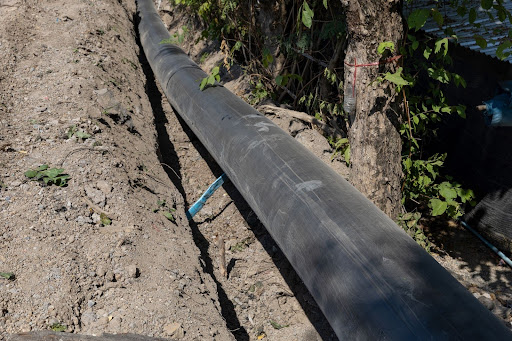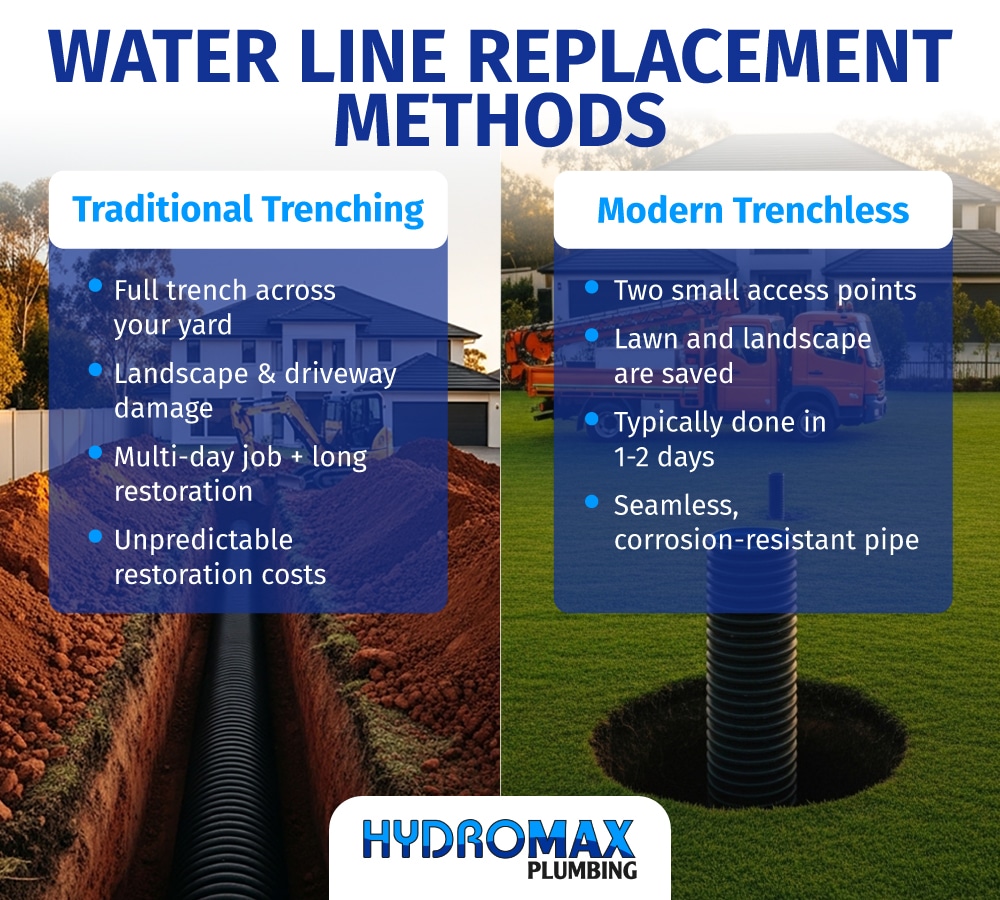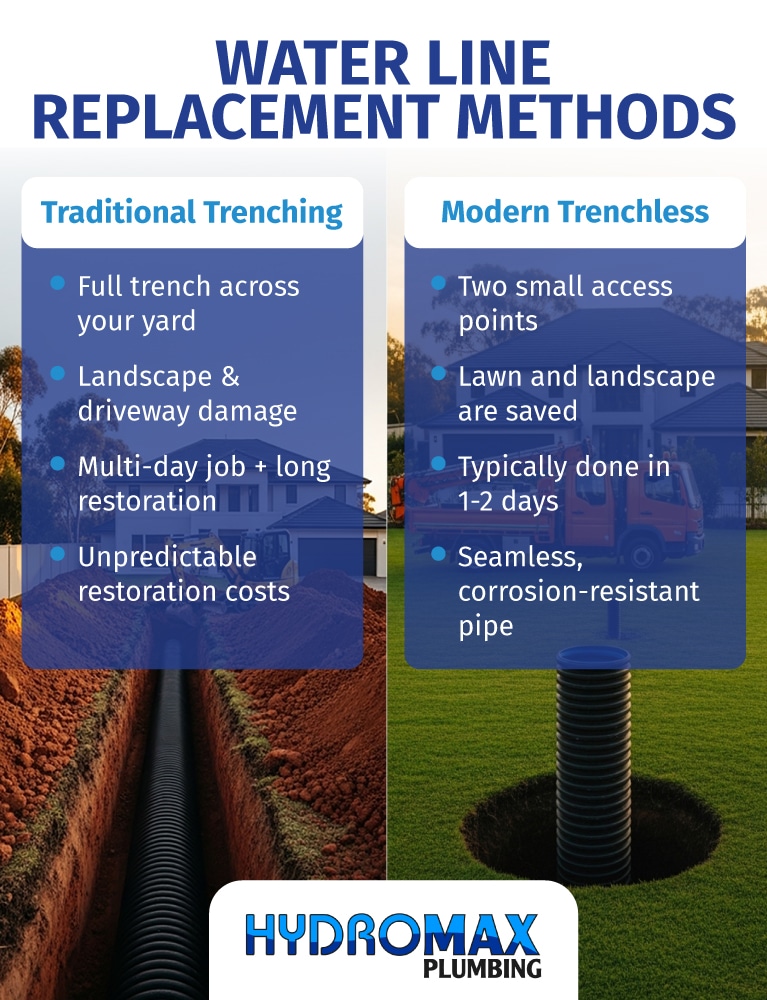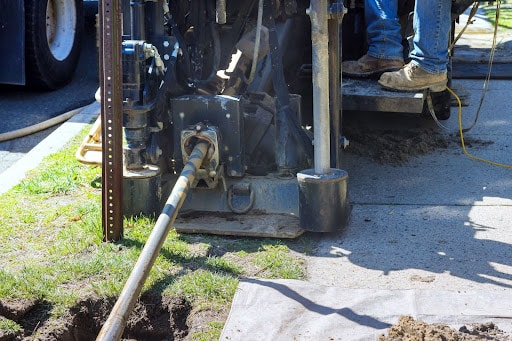
Water lines play a vital role in your home, delivering clean water to every faucet and appliance. When these pipes are compromised by age, corrosion, mineral buildup, or damage, the consequences can range from low water pressure and recurring leaks to costly property damage. A full water line replacement—which involves installing a new, durable supply pipe—is often the most effective solution for restoring consistent, reliable water flow for the long term.
This often leaves homeowners facing a critical choice: repair a localized issue or invest in replacing the entire line for lasting security. While a simple repair might seem cost-effective, widespread deterioration often signals that a comprehensive upgrade is the smarter move. This guide will help you navigate that decision, exploring modern replacement methods and the key factors to consider to ensure your investment protects your home and provides peace of mind for years to come.
Most homeowners don’t routinely monitor their water systems, but there are several warning signs that can signal potential trouble:
By paying close attention to these indicators, you can prevent more severe damage and maintain a stable, efficient water supply. Early detection allows for proactive solutions—often saving you time, money, and disruption in the long run.
Several factors can contribute to water line damage, many of which develop gradually:
Homes built decades ago frequently have galvanized steel or cast iron pipes that corrode and accumulate mineral deposits over time. As these pipes wear out, they become more prone to leaks and bursts.
Tree roots search for moisture underground and may enter through small cracks in water lines. Once inside, they expand and cause ruptures or full-blown pipe failure. Planning landscaping wisely and placing large trees away from water lines can help prevent this issue.
Freezing and thawing cycles, heavy rainfall, or drought-like conditions can shift the soil, increasing stress on buried pipes. Without proper insulation, water lines may crack or burst due to temperature and soil changes.
Pipes made from inferior materials or installed poorly are more likely to fail prematurely. Whether through hasty sealing or subpar products, shortcuts can lead to cracks, leaks, and expensive repairs down the road.
Soil composition, water chemistry, and exposure to corrosive elements can all degrade a pipe’s integrity. Over time, these factors thin the pipe walls, making leaks much more likely. If you live in a multifamily or mixed-use building, additional regulations might apply, so be sure to verify requirements specific to your property type.


Until recent years, replacing a water line often meant digging a large trench across your property. However, homeowners today can take advantage of advanced technologies that reduce excavation and preserve landscaping.
Trenchless repairs require only minimal digging, typically through strategically placed access points. These methods offer durable solutions without extensive property damage and often speed up the entire project.
Pipe bursting breaks apart the old pipe and inserts a new, durable line in one continuous motion. Because it uses only two small entry and exit points, it drastically reduces landscape disruption.
Pipe lining involves cleaning out the existing pipe, then inserting a resin-coated liner that hardens in place. The result is a seamless, corrosion-resistant interior pipe. This approach extends the life of the original line without requiring a total excavation.
Advanced video inspections allow plumbers to locate cracks, blockages, and other damage with high precision before deciding on a solution. By making more accurate diagnoses, professionals save homeowners from unnecessary digging and wasted time.
Whether using pipe bursting or lining, trenchless technology often has a much faster turnaround than traditional digging methods. This efficiency generally helps you resume normal household activities sooner, though the exact timeframe depends on project specifics.
A common point of confusion is determining who is responsible for a broken water line—the homeowner or the city. Generally, the homeowner is responsible for the pipe that runs from the city’s water meter to their house. The city is responsible for the water main and the pipe leading up to the meter. A professional plumber can quickly identify the location of a leak to clarify who is responsible for the repair.
The cost and duration of a water line replacement vary based on project complexity, pipe material, and local permitting. While traditional digging might seem cheaper initially, it can lead to expensive landscape restoration. Trenchless methods may have a higher upfront cost but often prove more cost-effective by saving your yard and reducing project downtime.
To help you plan, here are answers to the most common questions about project costs:
Generally, if you have recurring leaks or structural issues in multiple areas, a full replacement may be the better long-term investment. A qualified plumber can conduct an inspection to determine whether a targeted repair is sufficient or if you’d benefit from upgrading the entire line.
While trenchless methods sometimes have a higher upfront cost because they use specialized equipment and materials, the savings on landscape restoration and reduced project downtime can make them cost-effective overall.
Many projects, especially those using trenchless methods, can be completed in just one to two days. Larger or more complex jobs may take several days. Your plumber can provide a specific timeline after an inspection.
In most cases, costs such as permits, inspections, and property restoration are disclosed in the estimate. Always ask for a detailed quote and clarification if any charges seem unclear.
Many plumbing companies and local lenders offer financing or payment plans. This can be invaluable if an urgent replacement strains your budget. Discuss payment options with your contractor before starting the project.
By taking note of these cost-related considerations, you can avoid surprises and make informed decisions that balance immediate expenses with long-term value.

Choosing the right professional is crucial. Opt for licensed, bonded, and insured plumbers who incorporate modern diagnostic tools and are proficient with advanced repair methods. Look for a company that offers video inspections, detailed estimates, and clear explanations of the recommended approach. Selecting a reputable provider ensures accurate diagnoses, minimal disruption, and quality workmanship.
When it comes to water line replacement, not all companies offer the same expertise and innovation. Our team at Hydromax Plumbing stands out by combining cutting-edge technologies with deep local knowledge and a steadfast commitment to customer satisfaction.
As a locally owned business in Evansville, Indiana, Hydromax Plumbing understands the region’s unique concerns—such as specific soil conditions and seasonal climate patterns—that can affect water lines. Our licensed, bonded, and insured professionals handle everything from minor repairs to large-scale replacements.
We specialize in modern, minimally invasive solutions like pipe bursting and trenchless repairs. By employing advanced tools such as video inspections, we can pinpoint issues quickly, resulting in less downtime and fewer disruptions.
Plumbing emergencies don’t observe business hours. That’s why we offer 24/7 emergency services to ensure your home’s water supply is restored as quickly as possible.
From the initial consultation to the final walkthrough, we take time to explain every step. Our goal is to keep homeowners fully informed while delivering top-notch workmanship. Whether you require a simple inspection or a full replacement, we strive to provide an outstanding experience.

Even though modern replacement methods ease the process, regular maintenance remains essential for extending your water line’s lifespan:
Professional evaluations can spot minor issues—such as small leaks or sediment buildup—before they evolve into significant problems.
Keep large trees or shrubs a safe distance from known pipe locations to minimize the risk of root intrusion.
Avoid overloading your plumbing system with simultaneous high-demand activities, which can stress older lines and accelerate wear.
Hard water accelerates pipe corrosion and mineral buildup. Consider a water filtration or softening system if your area suffers from high mineral content.
Ensure pipes in unheated areas are insulated to prevent winter freezes. If a line is damaged beyond repair or no longer in use, have it shut off properly by a professional.
Taking a proactive approach to water line replacement is one of the best ways to protect your home’s value, safety, and comfort. By recognizing early signs—such as low water pressure, inexplicable spikes in bills, or persistent damp spots—you can address issues before they escalate into major problems. Prompt action often leads to smoother, more efficient repairs.
When the time comes for a water line update, trust a proven partner to guide you. Hydromax Plumbing leverages modern trenchless repair methods, responsive 24/7 emergency services, and a customer-first philosophy to optimize every phase of your project. Whether you’re dealing with aging infrastructure or an urgent leak, Contact Hydromax Plumbing today for an inspection or consultation. With the proper expertise and timely attention, your water line can reliably serve your home for many years to come.